Efest LUC V2 Charger 2017
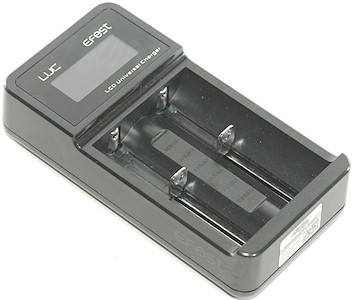
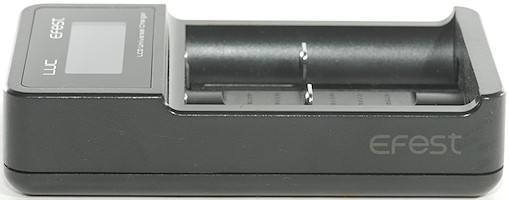
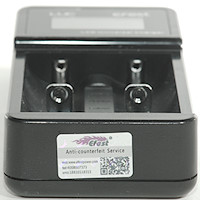
This is a two slot mains powered LiIon charger with 2 different current settings and power bank function.
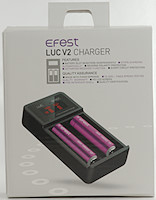

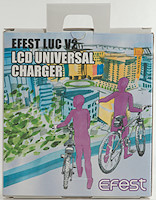

It arrived in a cardboard box with specifications on it.
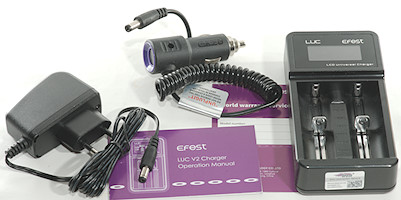
The box included the charger, a power supply, a car adapter, a warranty card and the instruction sheet.
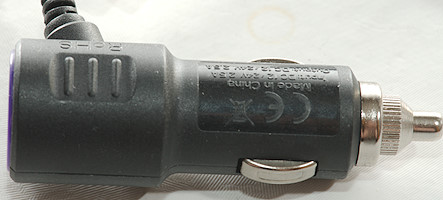
The car adapter is a fairly standard one.

The charger has a 12V power socket and the usb output on the back, together with the current selection switch. The current selection is shown on the display, i.e. the risk of forgetting the switch is fairly low.
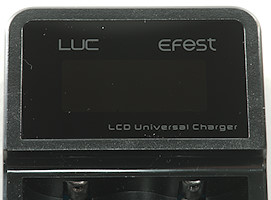
The user interface is a display and the switch on the back.
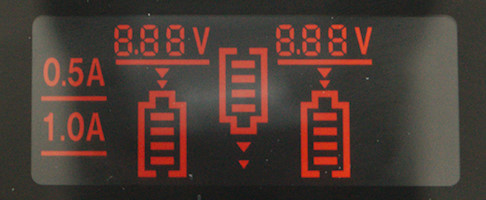
During power on all the segments are shows: Current selection, Channel 1, usb output, channel 2
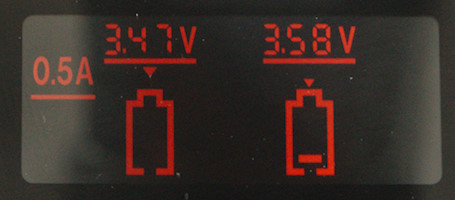
Here I am charging 2 batteries at 0.5A.
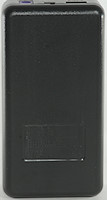
Specifications are on the bottom, but not very easy to read.
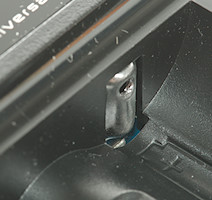

The slots uses the classical slider construction and it works fine.
The slots can work from 30.5mm to 71.5mm. This will give trouble with a few long protected batteries.


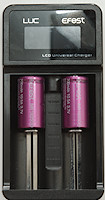
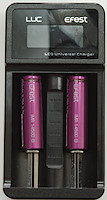
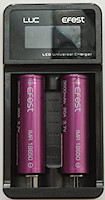
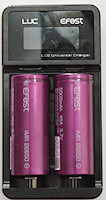
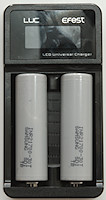
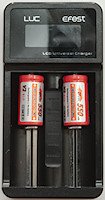
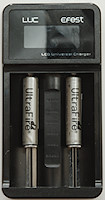
The charger can handle 71 mm long batteries including flat top cells.
Measurements
- When not connected to power it will discharges with about 0.15mA (2.5mA on usb slot).
- Below 0.6V the charger will not detect a battery
- Between 0.6V and 3V the charger will charge with about 150mA to 50mA
- Above 3V the charger will use regular charging.
- Batteries below 1.2V will not show correct on voltmeter.
- Above 1.2V the meter is within 0.1 volt.
- Charger will restart when voltage drops slightly.
- It will restart charging on reinsertion of the battery or power cycling.
- Power consumptions when idle without battery is 0.2 watt
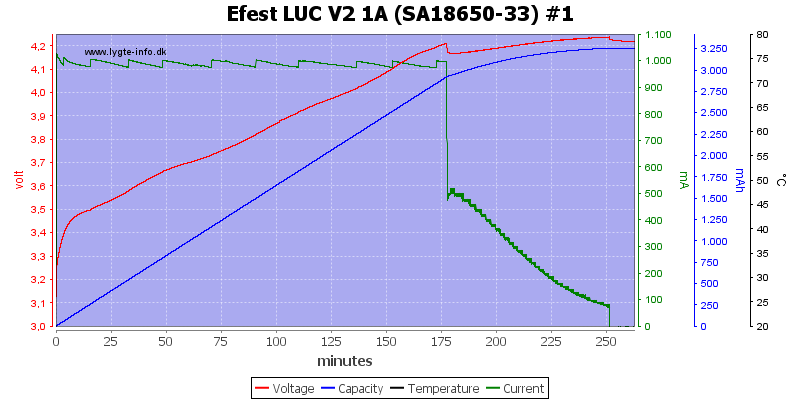
The charge curve is a bit special for this charger, when it reach about 4.2V the current drops significantly and then it goes into something like a CV phase and terminates at about 100mA. It works fine and there is nothing wrong with this charge curve.
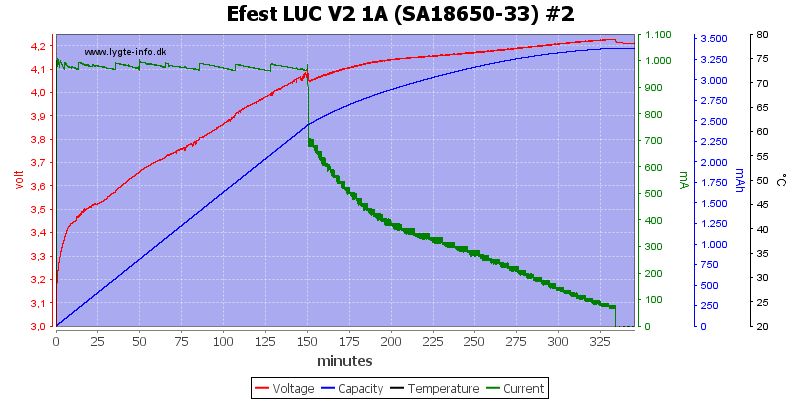
The second slot works the same way.

For some reason it drops the current a bit early on this cell, it means longer charge time, but again it works fine.
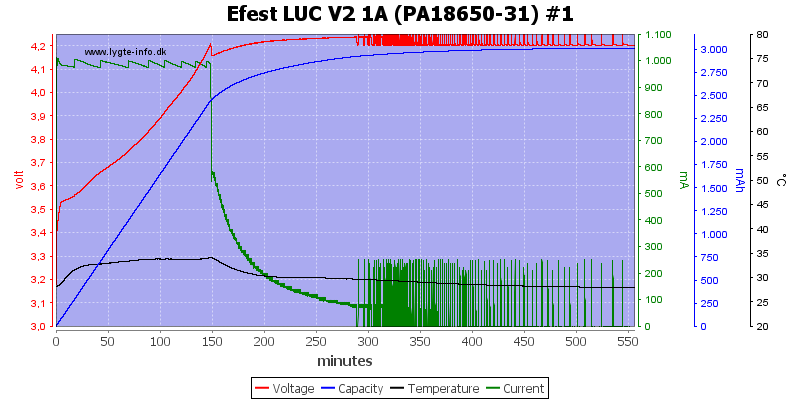
Oops, old cell have trouble terminating.
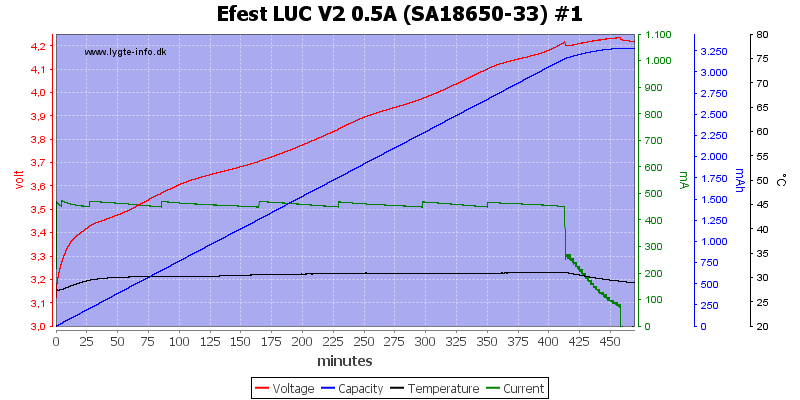
Charging at 0.5A also looks fine.

The smaller cell also charges perfectly.

And no surprise with this very old cell: Charger has trouble terminating.
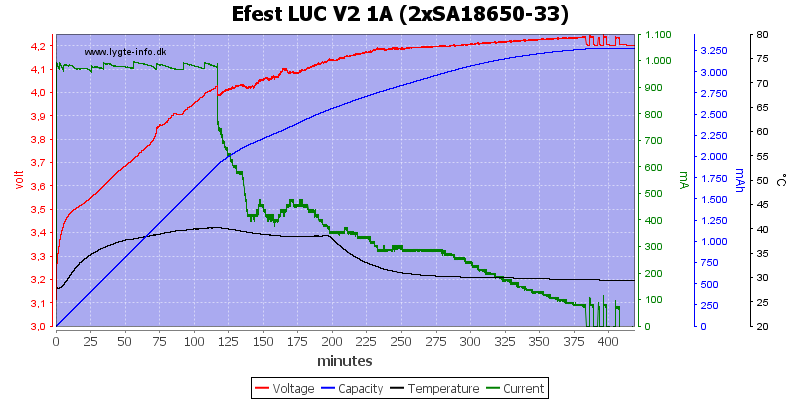
The charger can do 2 cells at 1A.

This requires about 1A from the power supply.
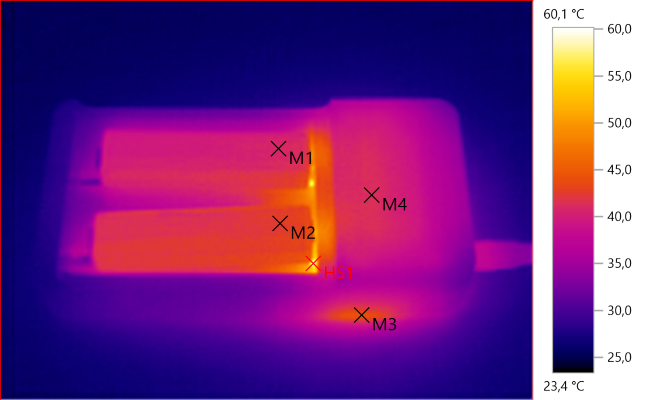
M1: 40,8°C, M2: 42,6°C, M3: 44,1°C, M4: 41,4°C, HS1: 60,1°C
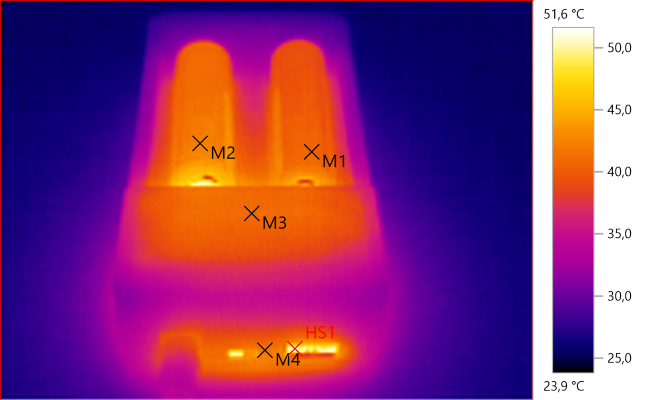
M1: 40,8°C, M2: 42,3°C, M3: 41,1°C, M4: 41,8°C, HS1: 51,6°C
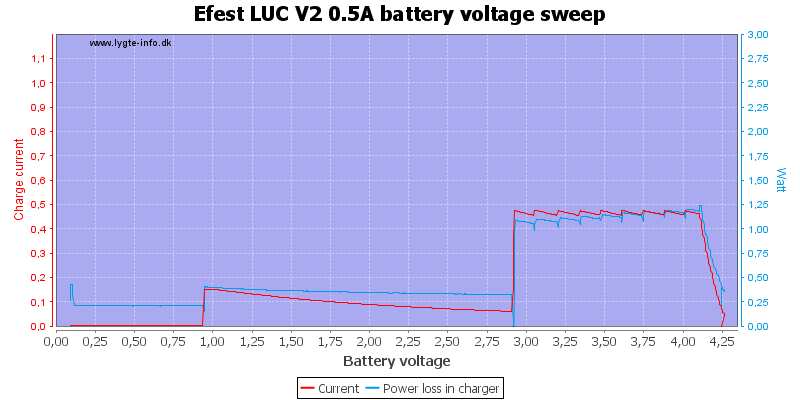
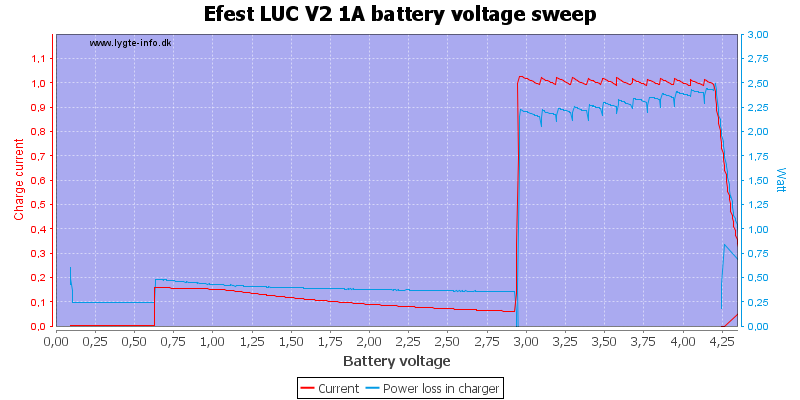
Sweeping the battery voltage from zero to 4.25 shows charge current at the different charge levels.
I did also add a curve to show how much heat is generated in the charger, most of the time the voltage will be between 3.5V and 4V, i.e. a around 2.3 watt at 1A charge current.
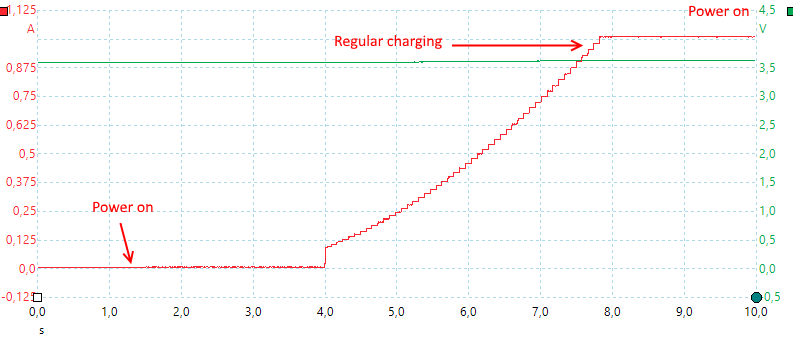
The charger is a bit slow to start with 6.5 seconds. The current regulation works in steps and takes a few seconds to find the correct charging current.
USB output
- Usb output turns on when loaded.
- Output will turn off after 6 seconds when load is below 30mA
- USB output is coded as Apple 1A
- Usb output will turn off when charger is powered.
- Only slot #1 will supply current to usb output
- Will discharge battery with 2.5mA when usb output is off
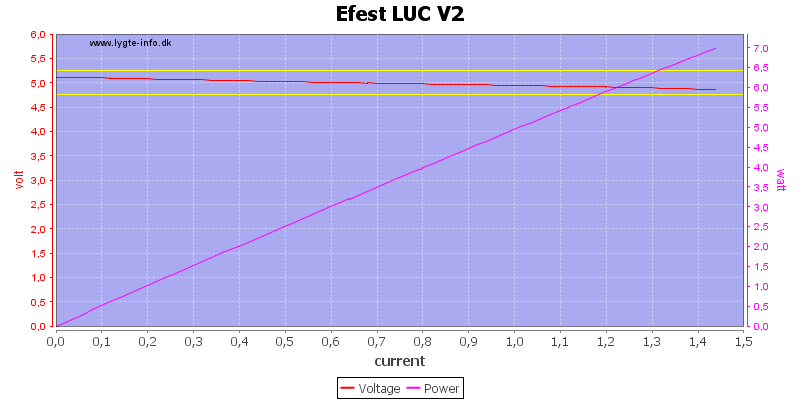
About 1.4A before over protection kicks in, this looks fine.

Stable output voltage until the battery is nearly empty and then it turns completely off, this is also fine.
But I would have like it to use a bit more energy from the battery, it turns off at 3.25V, using 3.0 or 2.75V would have given slightly more energy.
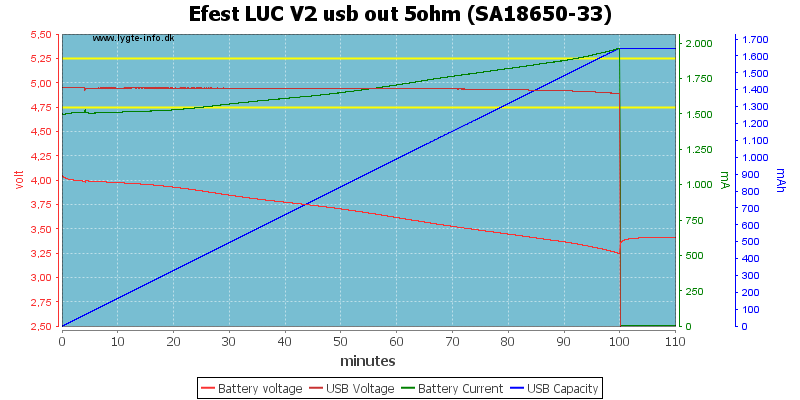
The boost converter is strong enough to maintain output at full 1A current.

At 0.5A the noise is 5mV rms and 46mVpp

At 1A the noise is 21mV rms and 156mVpp.
Conclusion
The charger works fairly good on LiIon batteries, the only problem is old cells will be worn totally down a bit faster, due to termination problems. Usual I do not like a "hidden" switch to select current, but because it is clearly shown on the display I cannot see any problems with it here.
The usb output works fine and can deliver the rated 1A, a more modern coding (DCP) would have been better.
Notes
The charger was supplied by Efest for review.
Here is an explanation on how I did the above charge curves: How do I test a charger











































